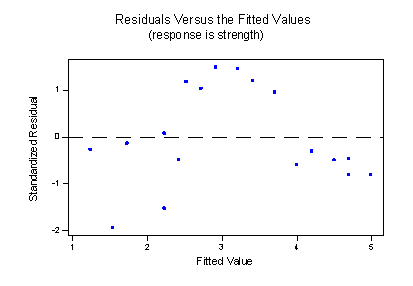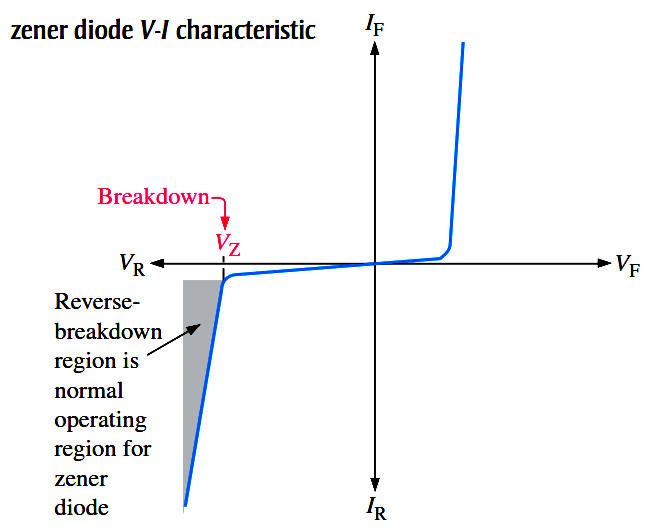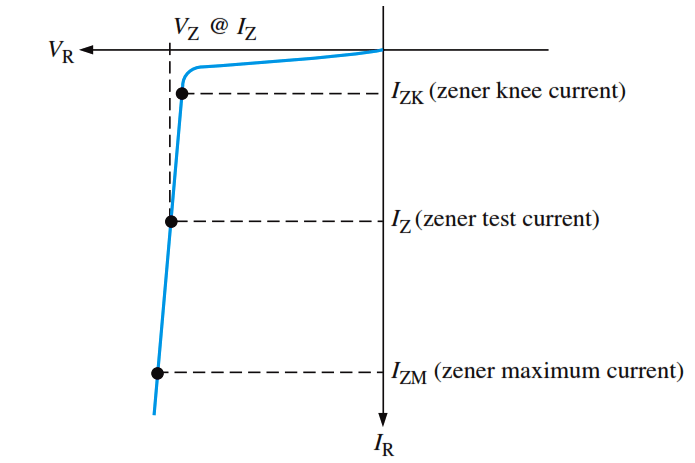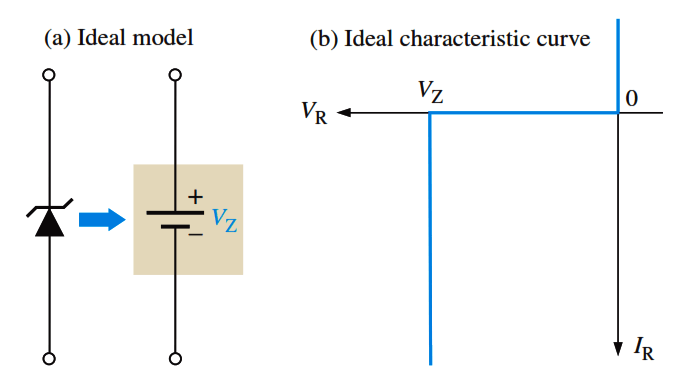Standard linear solid model
Home » Query » Standard linear solid modelYour Standard linear solid model images are available in this site. Standard linear solid model are a topic that is being searched for and liked by netizens now. You can Get the Standard linear solid model files here. Download all free photos and vectors.
If you’re looking for standard linear solid model pictures information related to the standard linear solid model interest, you have visit the ideal blog. Our site always gives you suggestions for viewing the highest quality video and picture content, please kindly surf and locate more informative video content and images that match your interests.
Standard Linear Solid Model. First we give the appropriate functional setting to prove the well-posedness of both models under certain assumptions on the parameters that is 0. It is the simplest model that describes both the creep and stress relaxation behaviors of a viscoelastic material properly. The constitutive equation for the linear elastic solid is then simply E 1 The creep and recovery behaviour of. 12 This model is obtained by adding a spring either in series to a Voigt model or in parallel to a Maxwell model see Figure a and b below.
 8 8 Piecewise Linear Regression Models Stat 501 From online.stat.psu.edu
8 8 Piecewise Linear Regression Models Stat 501 From online.stat.psu.edu
In consideration of the nature of the tested material and the applied testing method we employed a three-parameter standard linear solid model Achenbach and Chao 1962 to describe the nonlinear. This model is known in litterature as the standard linear solid SLS. This model is sometimes called a standard linear solid model. Of course in order to more precisely describe the general behavior of true visco-elastic bodies usually a more general linear visco-elastic model is required of which the constitutive equation can be written as. Derive the constitutive equation relating the overall stress stress rate strain and strain rate. Damping of vibrations in materials is normally anticipated on the basis of the damping modes of the standard mechanical model for damping.
In consideration of the nature of the tested material and the applied testing method we employed a three-parameter standard linear solid model Achenbach and Chao 1962 to describe the nonlinear.
The stan-dard solid model is a three-parameter E 1E 2 and model and is used to describe the viscoelastic behavior of a number of biological materials such as the cartilage and the white blood cell membrane. In this paper we consider the standard linear solid model in mathbbRN coupled first with the Fourier law of heat conduction and second with the Cattaneo law. In consideration of the nature of the tested material and the applied testing method we employed a three-parameter standard linear solid model Achenbach and Chao 1962 to describe the nonlinear. Finite element models for the design of. A better model is the standard linear solid which is shown below. Second using the energy method in the Fourier space we.
 Source: sciencedirect.com
Source: sciencedirect.com
MOE are then used in combination in a standard linear solid model SLS describing the viscoelasticity mathematically. First we give the appropriate functional setting to prove the well-posedness of this model under certain assumptions on the parameters that is 0. In this paper we consider the standard linear solid model in mathbbRN coupled first with the Fourier law of heat conduction and second with the Cattaneo law. Although this is a reasonable step further sophistication is still required in order to realistically capture the nonlinear rate. Derive the constitutive equation relating the overall stress stress rate strain and strain rate.
 Source: electronics-tutorials.ws
Source: electronics-tutorials.ws
The SLS is a simple model that does not fully reproduce the behavior of true surfaces but since it exhibits the correct qualitative behavior for creep compliance and stress. The constitutive equation for the linear elastic solid is then simply E 1 The creep and recovery behaviour of. A 0σ a 1σ b 0ɛ b 1ɛ ɛ ɛ. The standard-linear-solid SLS model also called the Zener model is a classic mechanical representation of anelastic behaviourit comprises a series combination of a spring and a KelvinVoigt solid Fig. 159 the standard solid model is composed of a spring and a KelvinVoight solid connected in a series.
 Source: simscale.com
Source: simscale.com
The standard-linear-solid SLS model also called the Zener. Model is a classic mechanical representation of anelastic. Second using the energy method in the Fourier space we obtain the. 159 the standard solid model is composed of a spring and a KelvinVoight solid connected in a series. The SLS is a simple model that does not fully reproduce the behavior of true surfaces but since it exhibits the correct qualitative behavior for creep compliance and stress.
 Source: sciencedirect.com
Source: sciencedirect.com
As illustrated in Fig. Models such as the standard solid model. Method of modeling the behavior of a viscoelastic material using a linear combination of springs and dashpots to represent elastic and viscous components respectively. However there are not so many references of the Standard Linear Solid model coupled with heat conduction although there have started to appear works on thermoelastic and thermoviscoelastic models where the displacement part is modelled by the Standard Linear Solid model but none of them in R N see references given in of such recent works. The standard linear solid model also known as the Zener model consists of two springs and a dashpot.
 Source: sciencedirect.com
Source: sciencedirect.com
The constitutive equation for the linear elastic solid is then simply E 1 The creep and recovery behaviour of. 159 the standard solid model is composed of a spring and a KelvinVoight solid connected in a series. A better model is the standard linear solid which is shown below. A The simpliest spring-dashpot models are the Maxwell and Voigt elements discussed in class. The standard linear solid SLS model for viscoelastic materials was able to qualitatively simulate the effects of disc level and degeneration on the ability of an intervertebral disc to resist both prolonged loading and low-frequency vibration.
Source:
Second using the energy method in the Fourier space we obtain the. Standard linear solid model. The so determined parameters can be used in eg. The Linear Elastic Solid the linear spring The simplest way to create a model of a material is to suppose that it consists of nothing but a linear spring of stiffness E. A better model is the standard linear solid which is shown below.
 Source: instrumentationtools.com
Source: instrumentationtools.com
A The simpliest spring-dashpot models are the Maxwell and Voigt elements discussed in class. Although this is a reasonable step further sophistication is still required in order to realistically capture the nonlinear rate. One that takes into account the parallel and series properties for the standard linear solid which shows how the. In consideration of the nature of the tested material and the applied testing method we employed a three-parameter standard linear solid model Achenbach and Chao 1962 to describe the nonlinear. MOE are then used in combination in a standard linear solid model SLS describing the viscoelasticity mathematically.
 Source: instrumentationtools.com
Source: instrumentationtools.com
The Linear Elastic Solid the linear spring The simplest way to create a model of a material is to suppose that it consists of nothing but a linear spring of stiffness E. The standard linear solid model also known as the Zener model consists of two springs and a dashpot. Method of modeling the behavior of a viscoelastic material using a linear combination of springs and dashpots to represent elastic and viscous components respectively. The model parameters of the system are E 1E 2 and. Derive the constitutive equation relating the overall stress stress rate strain and strain rate.
 Source: instrumentationtools.com
Source: instrumentationtools.com
159 the standard solid model is composed of a spring and a KelvinVoight solid connected in a series. Damping of vibrations in materials is normally anticipated on the basis of the damping modes of the standard mechanical model for damping. B For the standard linear solid discussed earlier determine the expression of the total strain t in terms of E 1E. The standard linear solid model also known as the Zener model consists of two springs and a dashpot. In this paper we consider the standard linear solid model in mathbbRN coupled first with the Fourier law of heat conduction and second with the Cattaneo law.
 Source: electrical4u.com
Source: electrical4u.com
In this paper we consider the standard linear solid model in mathbbRN coupled first with the Fourier law of heat conduction and second with the Cattaneo law. The standard linear solid model also known as the Zener model consists of two springs and a dashpot. The Linear Elastic Solid the linear spring The simplest way to create a model of a material is to suppose that it consists of nothing but a linear spring of stiffness E. Behaviourit comprises a series combination of a. Models such as the standard solid model.
 Source: sciencedirect.com
Source: sciencedirect.com
Method of modeling the behavior of a viscoelastic material using a linear combination of springs and dashpots to represent elastic and viscous components respectively. A 0σ a 1σ b 0ɛ b 1ɛ ɛ ɛ. A better model is the standard linear solid which is shown below. In consideration of the nature of the tested material and the applied testing method we employed a three-parameter standard linear solid model Achenbach and Chao 1962 to describe the nonlinear. It is the simplest model that describes both the creep and stress relaxation behaviors of a viscoelastic material properly.
 Source: sciencedirect.com
Source: sciencedirect.com
The stan-dard solid model is a three-parameter E 1E 2 and model and is used to describe the viscoelastic behavior of a number of biological materials such as the cartilage and the white blood cell membrane. Second using the energy method in the Fourier space we obtain the. Models such as the standard solid model. Second using the energy method in the Fourier space we. In this paper we consider the standard linear solid model in mathbbRN coupled first with the Fourier law of heat conduction and second with the Cattaneo law.
 Source: electronics-tutorials.ws
Source: electronics-tutorials.ws
It is the simplest model that describes both the creep and stress relaxation behaviors of a viscoelastic material properly. However there are not so many references of the Standard Linear Solid model coupled with heat conduction although there have started to appear works on thermoelastic and thermoviscoelastic models where the displacement part is modelled by the Standard Linear Solid model but none of them in R N see references given in of such recent works. First we give the appropriate functional setting to prove the well-posedness of this model under certain assumptions on the parameters that is 0. A The simpliest spring-dashpot models are the Maxwell and Voigt elements discussed in class. In this paper we consider the standard linear solid model in mathbbRN coupled first with the Fourier law of heat conduction and second with the Cattaneo law.
 Source: instrumentationtools.com
Source: instrumentationtools.com
MOE are then used in combination in a standard linear solid model SLS describing the viscoelasticity mathematically. The constitutive equation for the linear elastic solid is then simply E 1 The creep and recovery behaviour of. For this model the governing constitutive relations are. The stan-dard solid model is a three-parameter E 1E 2 and model and is used to describe the viscoelastic behavior of a number of biological materials such as the cartilage and the white blood cell membrane. The model parameters of the system are E 1E 2 and.
 Source: en.wikipedia.org
Source: en.wikipedia.org
This model is known in litterature as the standard linear solid SLS. The so determined parameters can be used in eg. Figures and tables are used to present the results and the evaluation. The standard-linear-solid SLS model also called the Zener. B For the standard linear solid discussed earlier determine the expression of the total strain t in terms of E 1E.
 Source: en.wikipedia.org
Source: en.wikipedia.org
However there are not so many references of the Standard Linear Solid model coupled with heat conduction although there have started to appear works on thermoelastic and thermoviscoelastic models where the displacement part is modelled by the Standard Linear Solid model but none of them in R N see references given in of such recent works. A 0σ a 1σ b 0ɛ b 1ɛ ɛ ɛ. 1a or a parallel combination of a spring and a Maxwell solid Fig. The Linear Elastic Solid the linear spring The simplest way to create a model of a material is to suppose that it consists of nothing but a linear spring of stiffness E. MOE are then used in combination in a standard linear solid model SLS describing the viscoelasticity mathematically.
 Source: en.wikipedia.org
Source: en.wikipedia.org
As illustrated in Fig. B For the standard linear solid discussed earlier determine the expression of the total strain t in terms of E 1E. Thus the standard linear solid model SLS is used and its complexities and non-idealities are simulated within bimodal AFM which has become a popular multi-frequency method since its introduction ten years ago 1112. Second using the energy method in the Fourier space we obtain the. 159 the standard solid model is composed of a spring and a KelvinVoight solid connected in a series.
 Source: sciencedirect.com
Source: sciencedirect.com
In this paper we consider the standard linear solid model in mathbbRN coupled first with the Fourier law of heat conduction and second with the Cattaneo law. The Linear Elastic Solid the linear spring The simplest way to create a model of a material is to suppose that it consists of nothing but a linear spring of stiffness E. The Standard Linear Solid Model a Consider a standard linear solid SLS. MOE are then used in combination in a standard linear solid model SLS describing the viscoelasticity mathematically. 159 the standard solid model is composed of a spring and a KelvinVoight solid connected in a series.
This site is an open community for users to do sharing their favorite wallpapers on the internet, all images or pictures in this website are for personal wallpaper use only, it is stricly prohibited to use this wallpaper for commercial purposes, if you are the author and find this image is shared without your permission, please kindly raise a DMCA report to Us.
If you find this site beneficial, please support us by sharing this posts to your favorite social media accounts like Facebook, Instagram and so on or you can also save this blog page with the title standard linear solid model by using Ctrl + D for devices a laptop with a Windows operating system or Command + D for laptops with an Apple operating system. If you use a smartphone, you can also use the drawer menu of the browser you are using. Whether it’s a Windows, Mac, iOS or Android operating system, you will still be able to bookmark this website.